Being in the Brush

Throughout history, the way the artist lays down the paint has been closely examined, criticized, praised, and admired. Joan Mitchell, Monet, Van Gogh, Basquiat, Twombly... are painters whose brushstrokes I admire and have assimilated into my own expression, more so in my new work. Imposing upon brushwork to carry the visual load has not been the easiest thing to do. The transition felt just as gargantuan as when I transitioned to formalist abstraction from representationalism. At first it feels uncomfortable, like trying on snug new leather shoes that haven't yet molded to the foot. There is also a feeling of vertigo as if you were leaving the ground and navigating with all new devices.

What the artists I mention have in common, even though they span a few centuries, is their extraordinary (I do mean extra ordinary!) brushwork which I have admired for decades. And when someone handed me a documentary video on the work of Joan Mitchell, it was a serendipitous moment impelling me to look at my other favorite brush-wielding artists. I had been busy making artist proofs and printing them on metal substrates and it was a natural step to look at those smooth rigid panels and think how nice it would be to draw on them.
Leaving the Ground
pigment ink on metal plate
16 X 20 in.
©W. Skog
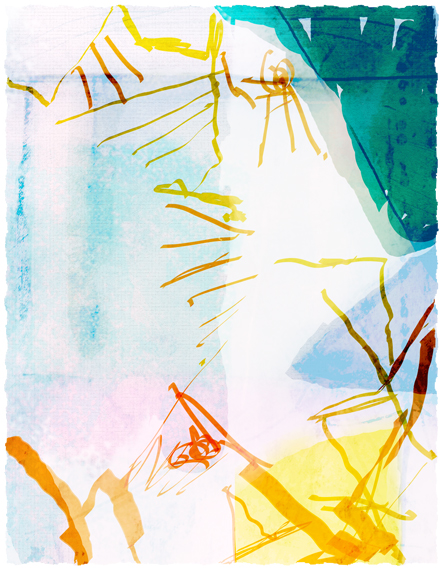
looking at the masters up close
When it comes to examining brush marks, size matters. Consider the small dots no bigger than the period at the end of this sentence that Seurat and much later Alex Colville used in their paintings compared to the mammoth size mark in a Robert Motherwell painting. Humans respond to stimuli in subjective ways that can be influenced by the artist. A signature brushstorke is a fossilized mark in history for that artist. The brushstroke is the intimate expression of the artist's inborn sensibility. It is both his emanated uniqueness and the trace of his efforts. It can enter the mind and penetrate the uncharted areas of visual expression,
"and as it reaches the level in us that, perhaps, makes us more human than any other aspect, it touches the chords of emotion, intuition and that mysterious and eternal longing of our soul".
-Petar Meseldzija
Joan Mitchell

Joan's brush is an energetic one. She covers the canvas with a modest vocabulary of marks that never in themselves become 'things'. Her palette is bright and pure and her whites are darling. The contrasting dark notes that amplify all the rest are signature elements.
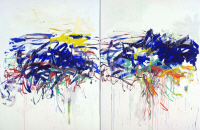
Cy Twombly

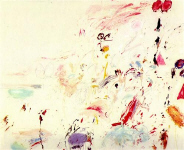
I love the awkward elelgance and sparseness of Cy Twombly's work. He had the ability to be purely himself on canvas never seeming to borrow much from the past. His work is very much about drawing in painting and sometimes something iconic emerges in his wispy wilfulness.
Jean-Michel Basquiat

Such a tragedy was the end of Basquiat's short life at age 27 in 1998. A New York street artist that penetrated the prada artworld and whose recent posthumous sale of the piece Dustheads shown here was a reported $48,843,750 this year at Christie's. His work usually revolved around singular heroic figures executed in a stick-figure drawing style.
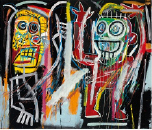
Vincent Van Gogh

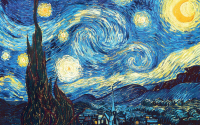
Van Gogh's brushwork has rhythm and direction. Brush marks move across the canvas in waves and orbs following the natural properties of twinkling stars, windswept fields, and electric skies. Such passion in his mark-making, and true to his lifestyle.
Claude Monet


Monet, ah Monet! Both Whistler amd Monet (among others) were so ahead of their times in the way they handled paint. Monet had the ability to make his canvases look like oil pastels in the subtle blending and smudgy rendering. The scale of his work, the expansiveness of composition was unique for his time. Lilies, in 3 panels was approximately 6.5 x 42 feet.
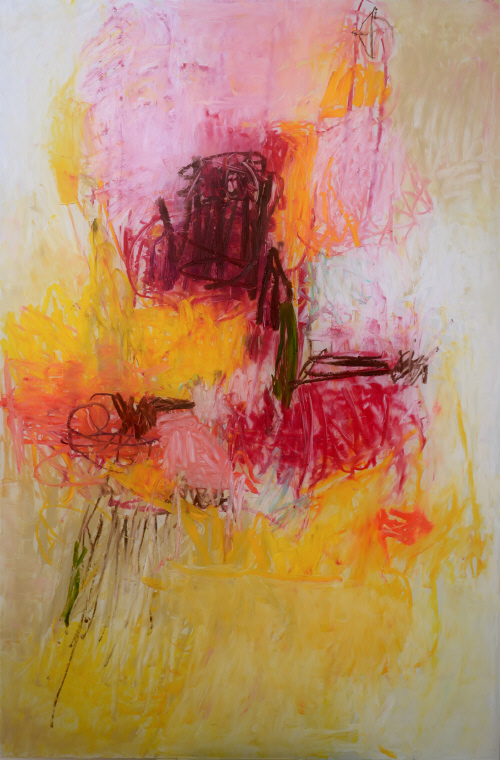
...and here I am!
Ludwig's Ninth
mixed media on metal plate
32 x 48 in.
© W. Skog
The artists above have inspired me, have made me more conscious of the artist's touch on the canvas and the power that it has in visual communication. My previous acrylic on canvas paintings occasionally contained a minimalist line drawing that sometimes spoke in and around the color fields, adjacent and juxtaposed to broader strokes of color. In the new artwork, using a mixed media technique, drawing has been stripped from underlays of color and in their density, construct and define the painting entirely.
See more blog posts by Canadian artist Wendy Skog.
wendy skog abstract art studio copyright 2022 all rights reserved